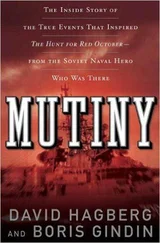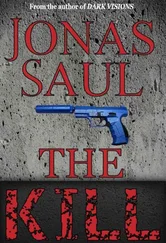The second feeling was one of paralyzing anxiety when he thought about Karin and the boys back home on Högbergsgatan.
He closed his eyes and suddenly found himself in Vitabergsparken. It was spring, and the air smelled like grass; Karin was walking alongside him, right by his side, he could make out the scent of her shampoo, she was holding John’s hand. The boy was wearing a denim jacket and a pair of what had once been white Converse, laughing his cackling little laugh when a huge dog suddenly approached them. The dog was white and shaggy and as big as the stroller Sami was pushing ahead of him up the hill. John ran forward, toward the dog, and he hugged it, clinging to its neck. Karin followed him, squatted down and stroked its nose and head. Sami knew she wanted him to take the baby out of the stroller, but he hesitated. He didn’t like dogs. And so Karin got to her feet, picked up the baby and let his tiny hand, no bigger than a tablespoon, stroke the dog’s white fur, so he could see how soft it was.
Suddenly, between him and his family, a crack appeared in the ground. It ran along the path, the gravel falling into the dark opening, and the pang in his heart was followed by a sinking feeling of melancholy that he knew all too well.
Sami stood on one side, looking at them—Karin and the kids next to the huge white dog—on the other. Suddenly, Karin jumped onto the dog’s back, lifted the boys up in front of her and then the dog ran away, away from the perilous opening, up the hill. Sami shouted, he shouted again, but no one could hear him.
His heart was pounding like two bass drums, his veins ready to burst in his temples, the tears streaming down his cheeks, and then he woke with a start. He couldn’t have been asleep for more than a few seconds, but he glanced suspiciously around the room. Everything looked the same as before.
—
Almost two hours passed before it was finally time to board the plane. To Sami, it felt like an eternity. But afterward, he would look back and remember it as no more than a few seconds. Even as he walked down the windowless tunnel between the terminal and the plane, he couldn’t believe it was true.
They had done it.
By the time he sat down in his seat and fastened his belt, his anxiety had sucked the last of his strength out of him. He fell asleep with his mouth open before the plane even made it onto the runway.
The big room that had been put at their disposal for the press conference was far too small. At the very front, standing next to temporary screens bearing the police emblem, were the day’s key figures: the police spokesman, Christer Ade, and behind him, Task Force Leader Caroline Thurn from the National Criminal Police. County Police Commissioner Caisa Ekblad and the National Police Commissioner, Therese Olsson, were also present. Each looked surprised at the size of the assembled media in front of them.
Christer Ade waved his arms and shouted out the rules of conduct in both Swedish and English. As a rule, journalists were terrible at taking orders, and it took almost ten minutes just to get the people and the cameras into the right places and for them to stop talking.
The many languages being spoken in the room gave everyone the sense that the world’s eyes, that early afternoon of September 23, 2009, were focused on police headquarters in Kungsholmen. It felt like the oxygen was going to run out even before the questions began, and Ade asked someone from the BBC to open the windows and let in some fresh air. But when the sounds of the city came rushing in to the media’s assembled microphones, tape recorders and cell phones, they were quickly closed again. The journalists would rather suffocate than not do their job.
—
Once the noise levels in the room had fallen low enough that Ade thought he could make himself heard, he loudly cleared his throat and began by outlining what had happened. Nothing he said was news to those in the room:
“The robbery was well organized, well planned and technically well equipped. All in all, that may lead to a number of different hypotheses about who was involved, and during this afternoon and evening—”
“Have any arrests been made?” the reporter from Aftonbladet, Sweden’s biggest tabloid, impatiently interrupted him, waving a yellow microphone in the air.
Ade realized that there was no point continuing his prepared statement. He answered Aftonbladet ’s question with the particular kind of authority that can only be learned in media training courses.
“No. We have questioned a number of people, the type we usually question in situations like this, but… no. At present, no one is being held in custody for the robbery in Västberga.”
“Martin Hogan, New York Times. How much did they steal?” The correspondent’s broad American accent caused everyone else to turn around.
He had neither a tape recorder nor a microphone. Instead, he was holding a small notepad and a pen in his hand, as though it were still the 1980s.
Ade switched to English.
“According to G4S, the robbers have stolen a ‘large but unconfirmed sum’ of money. We don’t know any more than that at present.”
“Why didn’t the police storm the building?” a columnist from Sweden’s leading newspaper, Dagens Nyheter, wanted to know. The paper’s news reporter, standing next to her, was irritated at not having thought of the question himself.
Christer Ade glanced at the national police commissioner, who shook her head almost imperceptibly. And yet Ade took a step to one side, as though to indicate that it was time for someone who had been directly involved to answer the question. County Commissioner Caisa Ekblad cleared her throat.
“There were indications that the robbers were heavily armed,” she said in English. “We may be dealing with individuals with military training and equipment here. We wanted to wait for the right resources.”
Her words made the room explode with excitement.
“Were they mercenaries?” the Washington Post reporter shouted.
“There are reports of helicopters exploding. Can you confirm that?” a representative from the French channel TF1 asked. “We know the police cars were stopped by the chains across the access roads!”
Therese Olsson took a step forward. There was something so authoritative in her movements that the room immediately fell silent. She replied first in Swedish and then in very good English.
“We are defining this robbery as an extraordinary event. This means that police forces from across the county are working on the case. The police chief from the Norrmalm district was the commanding officer this morning, working alongside two operation heads, one in Västberga and one in Arninge. The operation is now working alongside us and the serious, organized crime unit. Which means that we are on high alert across the country.”
—
They loved it.
Caroline Thurn was standing in the shadows, right behind County Commissioner Ekblad, and realized that she would make it through the press conference unscathed. Neither Olsson nor Ekblad could hand over to Thurn at this point; it would make it look like they were shirking their responsibilities.
From her ringside seat, Thurn could feel that the atmosphere in the room was different than usual. Not just because of the number of journalists and nationalities. The questions were being asked in a very different tone, and there was a very different sense of expectation and intensity. At first, she assumed it was just because of how spectacular the robbery had been. Pictures of the helicopter taking off were already plastered across the Internet. No one had been hurt, they had gone in through the roof; this was the type of raid people loved.
Читать дальше












